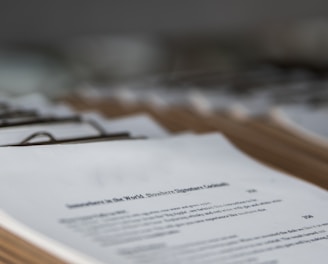Use Desktop for Better Experience
Corporate Term Loan Process
FINANCIAL
Ryan Cheng
7/4/20254 min read
For any business, securing the right financing is a critical step toward growth, whether it's for purchasing new equipment, expanding facilities, or funding a strategic acquisition. Among the various financing options, the term loan is a foundational product in corporate banking. It provides a lump sum of capital that a business repays over a predetermined period, making it a predictable and structured way to fund long-term investments.
Stage 1: Origination and Initial Assessment
This is the "getting to know you" phase, where the foundation for the entire deal is laid.
Understanding the Client's Needs
The process begins with a meeting between the banker and the company's management. The goal is to understand the purpose of the loan, the company's history, its products or services, and its position in the market. Is the loan for a specific capital expenditure, a real estate purchase, or to refinance existing debt? The answer will shape the entire structure of the loan.


Preliminary Financial Review
The borrower will be asked to provide key financial documents. This typically includes three years of historical financial statements (balance sheets and income statements), recent interim financials, and business tax returns if the statements are unaudited. For privately held businesses, personal financial statements from the owners are also common, as they often provide personal guarantees.
Based on the initial information, the banker will begin to structure a potential loan. This involves considering the loan amount, the term (length of the loan), the amortization schedule (how it will be repaid), and preliminary pricing (interest rate). This leads to the creation of a term sheet, a non-binding document that outlines the proposed key terms of the loan. This document becomes the basis for negotiation.
Initial Structuring and Proposal




Stage 2: Due Diligence and Credit Underwriting
Once the borrower agrees to the preliminary term sheet, the deal moves into the formal approval process. This is the most critical phase for the lender.
In-Depth Due Diligence
The bank conducts a thorough investigation to verify the information provided and assess potential risks. This process, known as due diligence, involves a deep dive into the borrower's financial health, credit history, and the collateral being offered. The lender will analyze industry trends, the company's competitive landscape, and any potential economic or regulatory risks that could impact repayment ability.
Credit Analysis and Approval
The bank's credit department or underwriters take the lead here. They perform a detailed analysis of the borrower's cash flow, which is the primary source of repayment. They also evaluate the value of any collateral, such as real estate or equipment, which serves as a secondary source of repayment. This analysis is compiled into a comprehensive credit approval document. The loan request is then presented to a credit committee for a final decision.
If the credit committee approves the loan, the bank issues a formal commitment letter along with the finalized term sheet. This letter legally obligates the lender to provide the financing, provided all remaining conditions are met.
Commitment Letter
Stage 3: Documentation and Closing
Closing
The closing is the final step where all documents are signed by both the borrower and the lender. The closing agent, often an attorney or title company representative, ensures all paperwork is correctly executed. Any conditions precedent—tasks that must be completed before funding—are verified at this stage. Once everything is in order, the loan funds are disbursed to the borrower.
Experience
With approval secured, the focus shifts to the legal and logistical finalization of the deal.
The bank's legal counsel, either internal or external, drafts the formal loan agreement and all related documents. These are the legally binding contracts that govern the loan.


The Promissory Note
This document details the loan amount, interest rate, repayment schedule, and what constitutes a default.
The Loan Agreement (or Facility Agreement)
This is the main contract that contains all the terms and conditions, including representations, warranties, and covenants (promises made by the borrower, such as maintaining certain financial ratios).
Security Agreements
If the loan is secured, these documents pledge the collateral to the lender, giving them the right to seize the asset in case of default.
Stage 4: Post-Closing and Loan Administration
The relationship doesn't end once the money is wired. The final stage involves ongoing management of the loan.
Loan Boarding
The loan is officially entered into the bank's servicing and monitoring systems.
Ongoing Monitoring
The bank will continue to monitor the borrower's financial health throughout the life of the loan. This includes collecting and reviewing periodic financial statements and ensuring compliance with all loan covenants. This monitoring helps the bank identify any potential issues early and work with the borrower to address them.
The loan administration team manages the day-to-day aspects of the loan, including processing payments, managing interest rate adjustments (if it's a variable rate loan), and handling any requests from the borrower.


